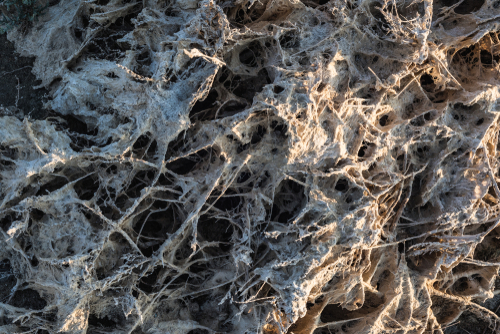Fungal Structures
As mankind develops and expands, the need for buildings and other structures grew with it. Most of those building involved concrete, sometimes on a huge scale, which is damaging to the environment on so many levels. Other materials like wood and plastic are also not sustainable or suitable either. However, a group of scientists believe that we could theoretically create buildings from fungus – and not just the structure, but the internal plumbing and electrics too, making a sustainable, self growing and repairing building.
“We propose to develop a structural substrate by using live fungal mycelium,” explained the European academics in their paper. “Fungal buildings will self-grow, build, and repair themselves.”

In a world which has already begun to see the physic changes caused by climate changes, the need for biological building materials would be a huge step forward in reducing fossil fuels and environmentally-destructive mining processes.
“Fungal materials can have a wide variety of mechanical properties ranging from foam-like to wood-like to polymer-like to elastomer-like,” explained co author microbiologist Han Wösten from The Netherlands’ Utrecht University. “The fact that we can make wood-like materials implies that we can use it for the building industry. The selling point of our materials is that it is biodegradable, thereby helping to create a circular economy. At the same time, it should not degrade when actually used as a building material. We can work around this apparent paradox by coating the material. In fact, we also coat wood with paint of oils to protect it against degradation.”

You might be surprised to know that NASA is also testing whether or not fungus could potentially grow in Martian soil, with an aim to using it to build low cost, sustainable structures on Mars. So far, all experiments have involved killing off the fungus once a structure has been built so that it solidifies and hardens sufficiently to carry the loads needed in structural walls. The aim is to find a way to keep the fungus alive so that it remains a living structure, allowing for further growth, repairs and alterations.
And it doesn’t stop with the main structure. Computer scientist, Andrew Adamatzky, another author of the paper, explained that they are looking to build fungal neuromorphic circuits to replace the electronics inside the building. “The living circuits will be self-growing, self-assembling and self-repairing, which no traditional circuitry can do.”
Overall, a circular economy for construction is the goal, minimizing the use of the Earth’s limited resources and reducing energy consumption.



